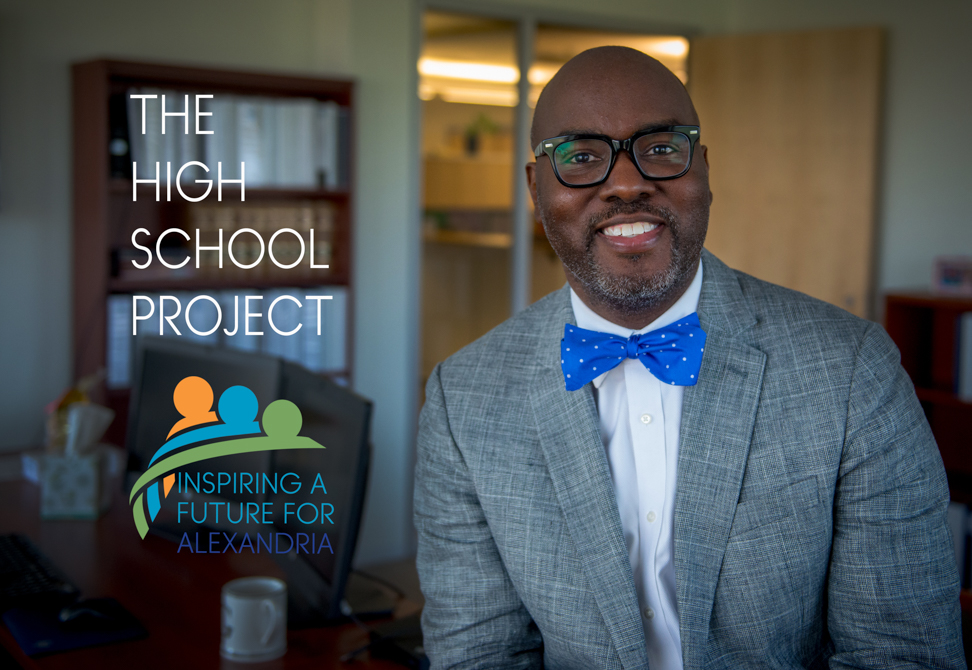Is ACPS ready for a connected high school network? This was the question put to the School Board prior to winter break along with potential cost impacts of Alexandria’s high school capacity challenges and an assessment of potential limitations around space.
On December 20, ACPS discussed two clear alternatives — a connected high school network or a second comprehensive high school — in response to a need to find space for an additional 1,200 students on top of the current 860 seats at the Minnie Howard Campus, which requires renovation at a minimum.
The High School Project aims not only to resolve the issues around growing student enrollment and space at the high school, but also redefines the high school experience for future generations of students. Rather than simply looking at buildings, space and land acquisitions, the project is an opportunity to assess the skills that our students need to be successful in the future and select programs to fulfill those needs in the long-run. The capacity goal is to see no more than 2,900 students using the facilities at the T.C. Williams King Street Campus at one time.
“We embarked on this work back in July when we began creating an educational vision prior to getting into a particular strategy. We want to make sure that we are not making a decision or building a structure without having a particular outcome in mind for the future of our students and our ACPS graduates. This is an important process and it is essential to follow the process step by step to ensure we make the right decision,” said Superintendent of Schools Dr. Gregory C. Hutchings, Jr.
A connected high school network is a future focused approach with one or more buildings or spaces linked to the home campus of T.C. Williams High School. In a connected high school network, each building could house one focused program or targeted area of study or multiple related interdisciplinary programs. A connected high school network could also include co-locating programs that share space and benefit from similar learning attributes, objectives or specially-built classrooms even though they cross disciplines, such as laboratory or technology spaces that support multiple courses, like chemistry, forensic sciences and cosmetology or engineering.
ACPS already has several programs that function similarly to a connected high school network. These include the T.C. Williams Satellite Campus, where students learn primarily online in a flexible environment, and the Chance for Change Academy, which provides students opportunities to be successful in a smaller setting. The Early College program is planned for future ACPS high school students on the campus of Northern Virginia Community College. The Virginia Tech Innovation Campus will also provide an opportunity to expand this connected network further.
The connected high school network, which is the option being recommended by the superintendent and ACPS administration, is based around research that demonstrates the way students will be learning in the future. A connected high school network can be designed for future flexibility, provide a variety of select program courses, and operate administratively according to the needs of the high school. This approach addresses the need for flexibility of space.
A second comprehensive high school would require building an additional school with the same or equivalent program of studies and academic options offered at T.C. Williams High School. It includes the full range of standard high school instructional, administrative, student services, operational resources and extracurricular and community space options including athletic fields on site at one single location. The space required to implement a full second comprehensive high school is only slightly smaller than the current size of T.C. Williams High School at approximately 460,000 square feet and will present challenges in a land-locked Alexandria. Land constraints in Alexandria may mean it will be challenging to find the space needed for this model along with the additional space needed for fields and parking.
At this time, estimates are not developed enough to indicate a significant cost savings or exposure of any specific high school option. ACPS has currently identified 15 possible sites that could be used in the future, including some that are city-owned, some that are owned by the schools and some that are privately owned. It is not anticipated that a rebuild of the Minnie Howard campus could provide sufficient space to accommodate all of the students who will need seats in the future. Costs, timing, feasibility and other project specific factors will be determined in spring of 2019.
The new School Board will have another discussion on this topic at the January 10 meeting, at which time a summary of the strategy recommendation will be presented. The Board will vote on the model they prefer on January 24.
- Watch the School Board meeting discussion.
- View the presentation to the School Board (PDF).
- Learn more about The High School Project: Inspiring a Future for Alexandria.
Want to have your say? Share your views with us on Twitter @ACPSk12 or on Facebook.

